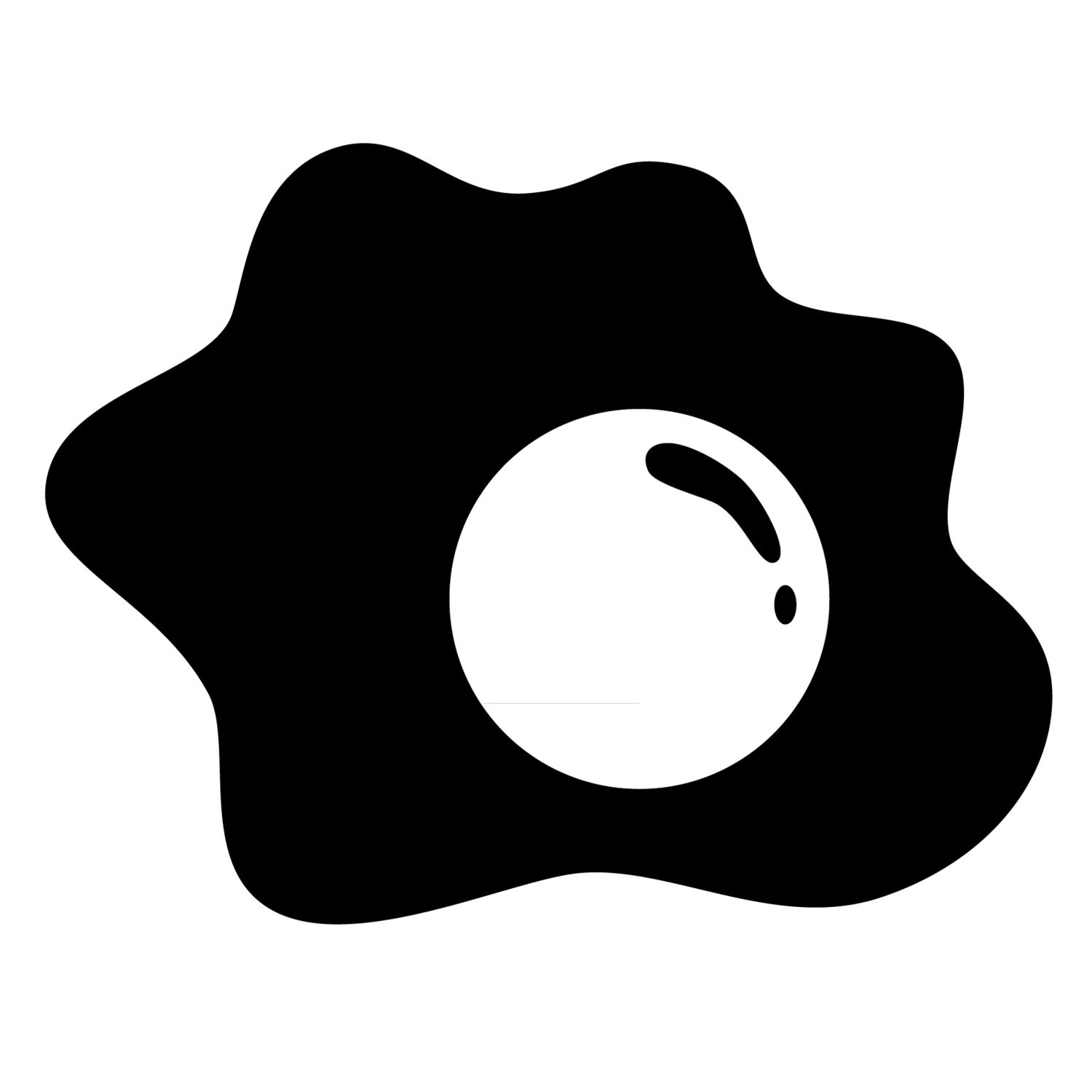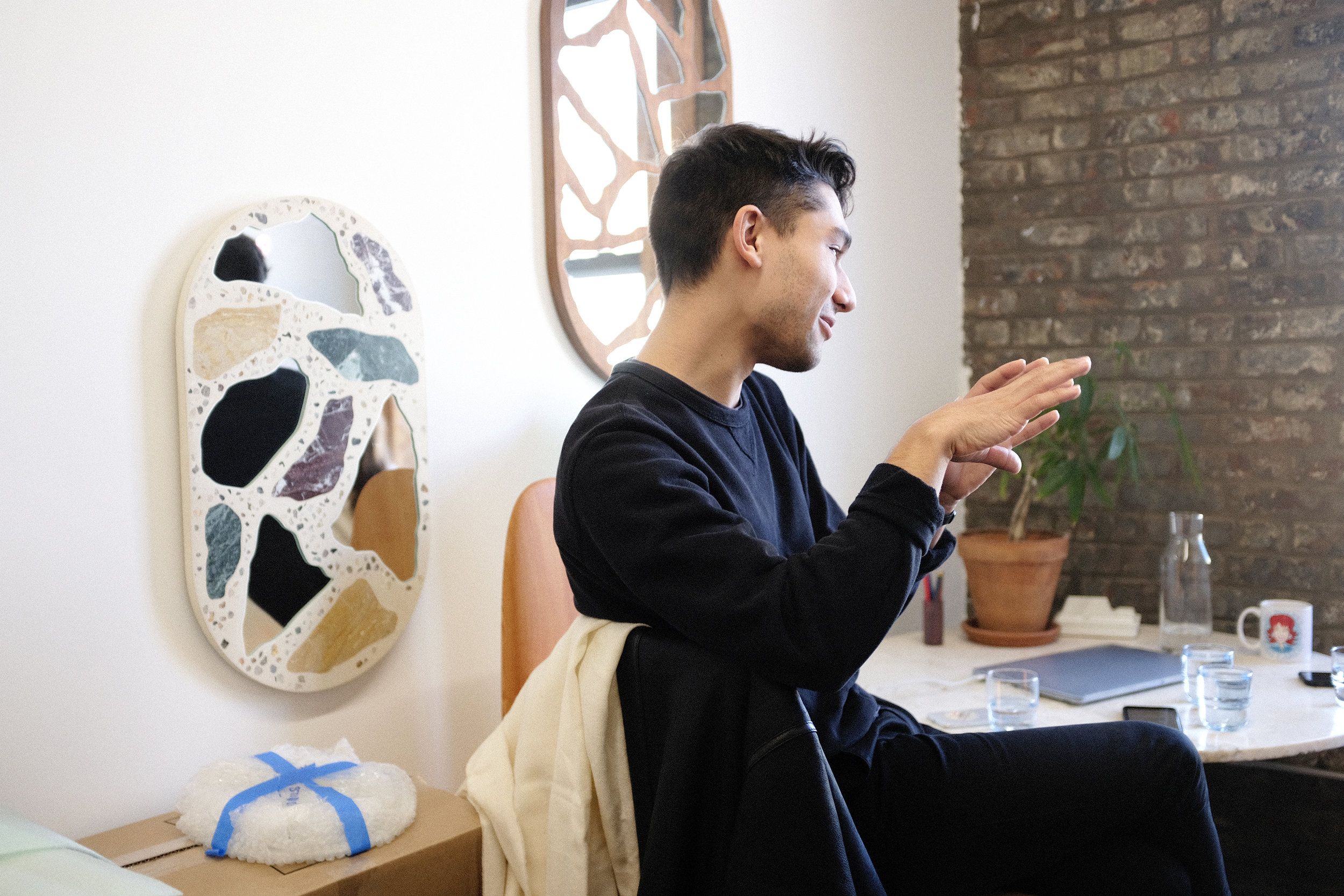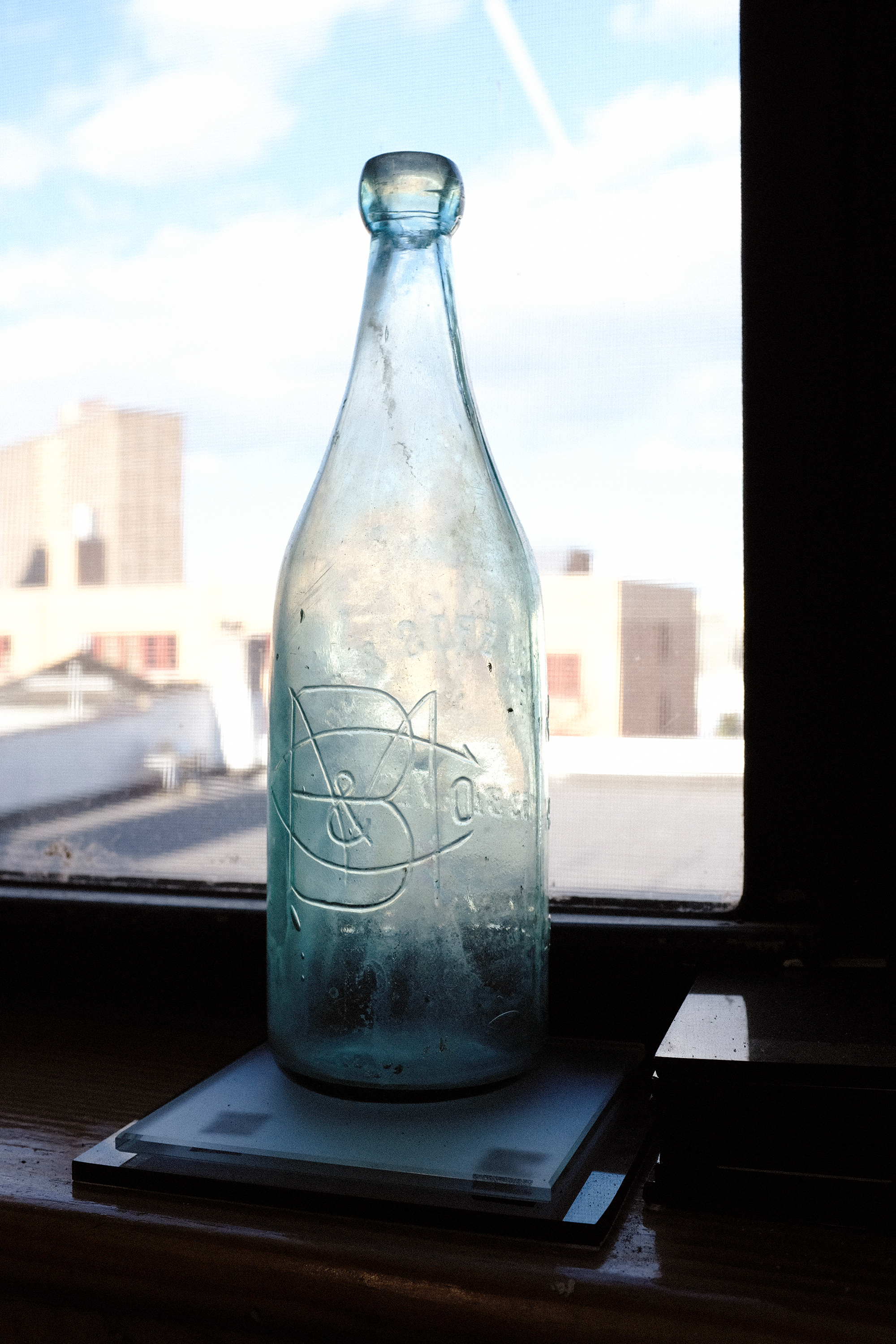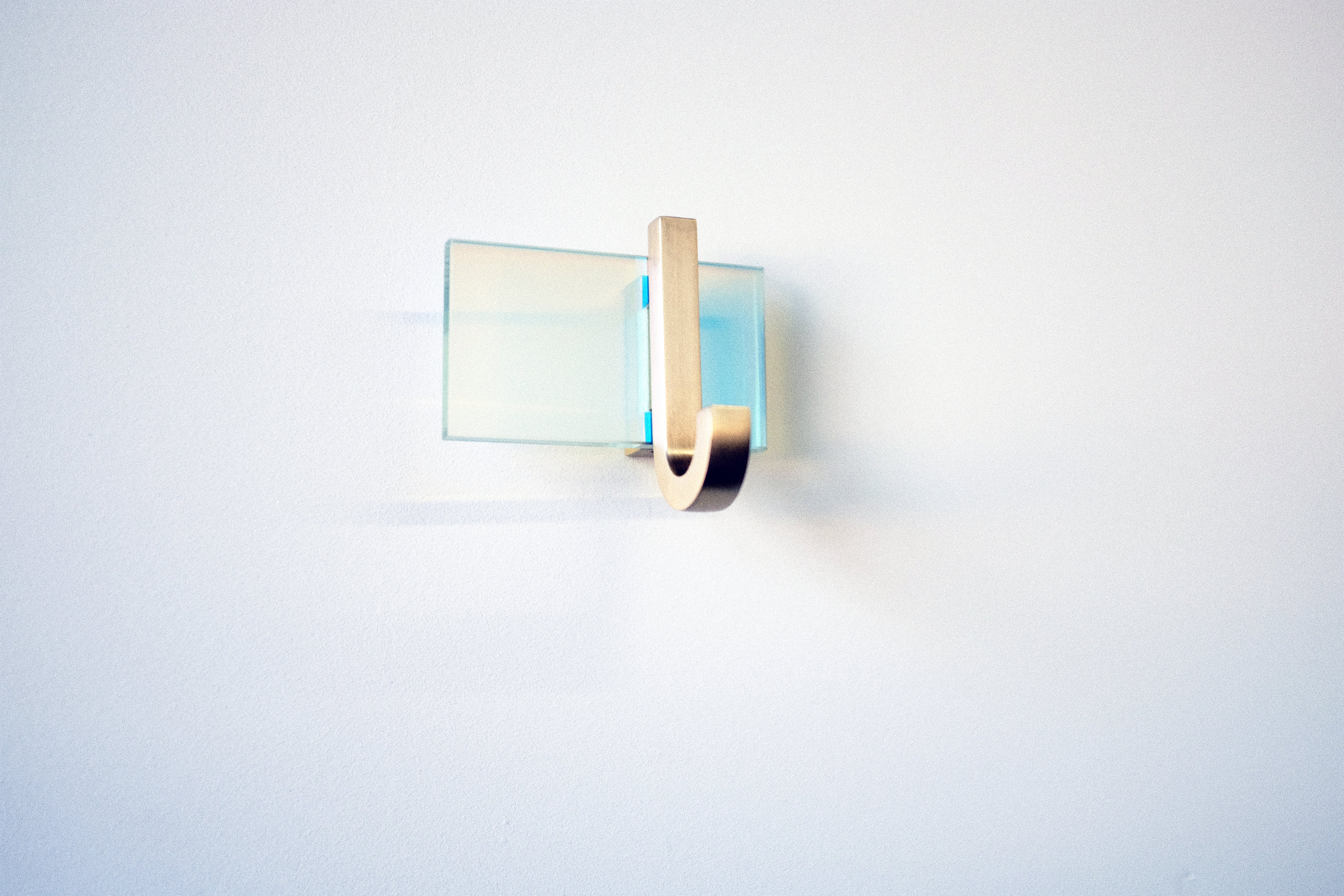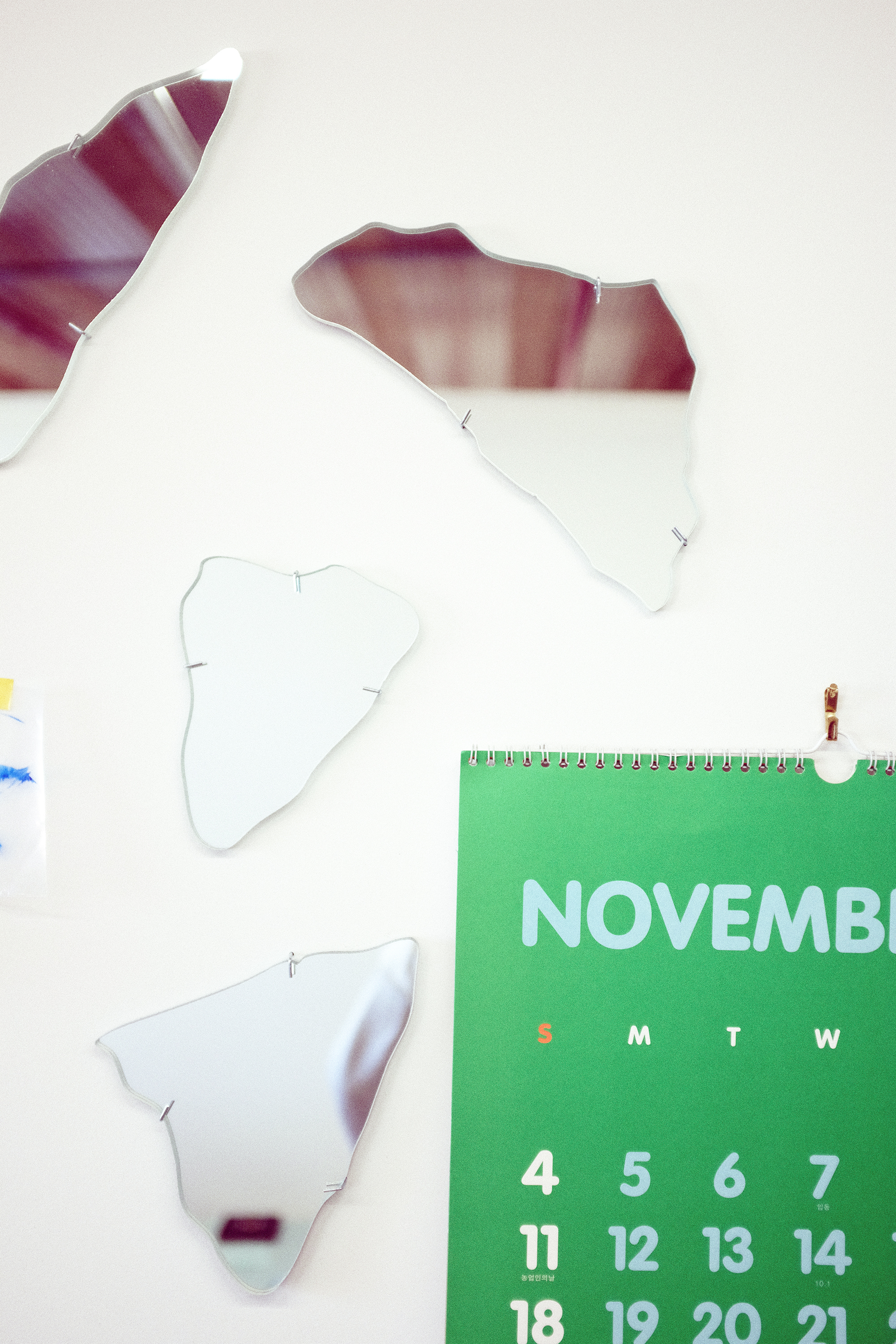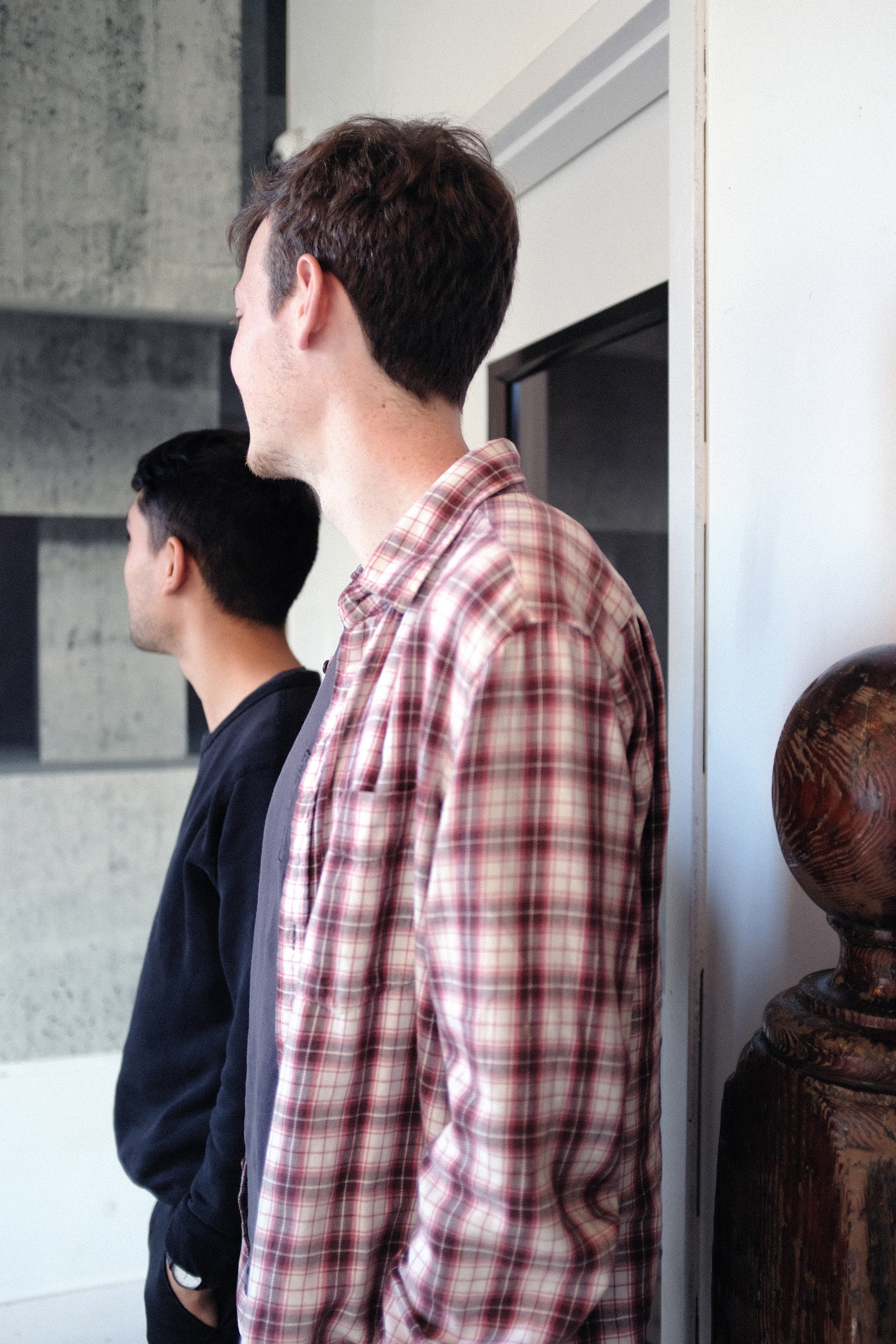10 NOV 2018
BUSHWICK, New York City
Better together.
Product designers Aiden Bowman and Josh Metersky talk about the value of partnership and their shared ambition for the future of Trueing.
“We believe there should always be a good reason to introduce new things into the world, and if we are to spend time developing a product, it better be as perfect and as truthful as we can make it.”
AIDEN BOWMAN / JOSH METERSKY
Aiden Bowman and Josh Metersky are the Brooklyn-based designers behind Trueing - a context-driven product design studio. Their collective backgrounds in engineering, design and art history lend each project a sense of utility, tempered with an appeal to wider material culture. To 'true', in verb form, is defined as bringing an object into its accurate, intended shape. Working from this usage, the studio's name reflects an ideology that guides each project, giving deference to the materials, functionality and people involved.
We love the name Trueing as it alludes to the notion of being truthful in the design process. How does materiality, functionality and authenticity inform the mission of your studio?
A: Our name comes from the word ‘truing’, which is the process (in engineering) of bringing an object into its exact, intended shape. To a certain degree, our studio’s identity is formed on our fascination with creating this kind of perfection: expressed as details, connections and material treatments that fall somewhere outside of ordinary. As a result, the work often has sense of tension within its design. Can something be both heavy and light at the same time? Can we fabricate a piece out of metal, but still maintain a certain organic softness? etc. Josh and I also have very different skills and interests – having a background in Art History, I’ve always been fascinated with the history of design and the material culture, trying to understand why people are drawn to certain aesthetics and objects. In a way, my way of thinking is very research orientated.
J: On the other hand, I studied mechanical engineering. I’m very interested in how things are made and why they’re made the way they are, from a scientific point of view. My inspirations come from more tangible subjects like material properties, structural qualities and construction precision. When you look at our work, I think the tension between our interests and personalities is apparent. I would say there is a level of perfection that our work is in pursuit of. We believe there should always be a good reason to introduce new things into the world, and if we are to spend time developing a product, it better be as perfect and as truthful as we can make it.
“Our name comes from the word ‘truing’, which is the process of bringing an object into its exact, intended shape. To a certain degree, our studio’s identity is formed on our fascination with creating this kind of perfection: expressed as details, connections and material treatments that fall somewhere outside of ordinary.”
#3000 Mirror, Project No. 3
Tell us about the work dynamic and creative exchange between you two?
A: Our partnership is connected by a singular mindset; we always try to come to an agreement on everything. We each have our own roles in the studio, but when it comes to the process of ideation and design, the creative exchange is always fluid. Given my background in communications and business development, my role, naturally, is to talk about our work in relation to contemporary discourses and to understand how our mission fits within the greater cosmos of design in New York and beyond. Josh on the other hand understands material, engineering and mechanisms, and he is really the mastermind behind the materiality and the structural play throughout our work. I can’t do certain things that Josh does well, and vice versa, but together, there’s a nice complement of expertise that adds depth to our partnership and work.
J: The way I approach design is very intuitive and straightforward—I always start with an exciting material that I want to work with. That’s really all the reason I need to get started. On the other hand, Aiden is always searching for the deeper meaning and associations. Between the back and forth, debates and conversations, new ideas emerge, and these ideas get folded into the product. Our whole creative process is quite dynamic and fluid. I would also add that both Aiden and I share this quirk of always having to do things in an official capacity. When we were coming up with names for our studio, we wanted to make sure we weren’t going to hate it in a year because we felt this was going to be a real endeavor. The moment we came up with Trueing, while we were out taking a walk one day, we bought the domain on the spot. We’re both super committed and totally egg each other on. But for me, that was a beautiful example of how we work – we admire and believe in each other so much that starting a business together seems so natural and inevitable.
“When we were coming up with names for our studio, we wanted to make sure we weren’t going to hate it in a year because we felt this was going to be a real endeavor. The moment we came up with Trueing, while we were out taking a walk one day, we bought the domain on the spot.”
A late 1800s beer bottle made for the Minck Brothers
Your work portrays a sense of playful ephemerality, could you tell us how this inclination developed?
J: I am an avid Pinterest user and I love collecting visual imagery. We have an inspiration wall here at our studio and it operates almost like a physical Instagram feed. In a way, this is how we think, and the wall becomes our outlet for embracing design references. We are always interested in the ambience of color, qualities of light and attention to detail. We both share a strong attraction to sharp corners and perfect curves, and we talk about the idea of tension in our design all the time. But we also collect things that are indicative of Trueing’s origins. That receipt, for example, is from when we were both going over to visit the friend who introduced us, and she asked us to bring tonic water. Aiden and I went to the bodega near my house and the bill came to exactly $4 and each of us had no cash except for $2 each. It worked out perfectly, a metaphor!
A: We do have some funny pieces in the ‘collection’. We also have a bottle that speaks to the background/research aspect of Trueing’s partnership. The building we’re in used to be a bottling plant, which makes sense because Bushwick, at one point, was a major center of beer production in the US. So, after hours of searching on Etsy, I found a bottle that was made right here in the late 1800s for the Minck Brothers. It’s got this great old logo, it’s very old Americana. Details like this weave themselves into our work and speak to a connection between new and old.
Inspiration wall at the studio of Trueing
“We have an inspiration wall here at our studio and it operates almost like a physical Instagram feed. In a way, this is how we think, and the wall becomes our outlet for embracing design references.”
Float Hook, Project No. 2
What is your vision for the future of Trueing?
A: Josh and I dream of having an atelier – a live/work situation in a leafy section of Queens or deep Brooklyn. We’d also love a larger space to do more fun and playful experiments, and to spread out and do larger scale work. Otherwise, our new collection of lighting is super important to us because we’re working at a scale that we have never worked at before. I think as we grow, we are headed more and more towards pieces that can contribute to an immersive design experience.
“I think as we grow, we are headed more and more towards pieces that can contribute to an immersive design experience.”
“We are always interested in the ambience of color, qualities of light and attention to detail. We both share a strong attraction to sharp corners and perfect curves, and we talk about the idea of tension in our design all the time.”
If you were to give one piece of advice to yourselves prior to the founding of Trueing, what would that be?
A: The first piece of advice I would give is to not doubt ourselves, but at the end of the day, you’re always going to doubt yourself and that’s fine. I’m completely comfortable with that at this point. It has more to do with the fact that you will eventually get to where you want to be if you keep trying. Josh and I had a frank conversation at the beginning of Trueing and said to ourselves, “We are not going to give up if this doesn’t work in three months.”
J: Exactly. My advice would be patience. It really is about finding the sweet spot between those two things: don’t give up because something’s not working perfectly, but also patience because, Aiden and I, for example, sometimes think things are not happening fast enough. And then we take a moment to think of how far we’ve come in the past year or two and it puts everything into perspective. For example, this time last year we didn’t have a studio.
A: In terms of offering ourselves advice in the past, or perhaps in the future, with regards to the actual work, it would be to make things bigger. Literally, just the size of everything should be two and half times what you thought it should be originally. We’ve found that customers in the market for these products, which are something between pieces of furniture and art, have more space to occupy. Although probably Josh disagrees, I think you can’t really design things for yourself. It’s these times of disagreement that feed into that creative tension we build on, and keep the dimension of our partnership from becoming singular.
“The first piece of advice I would give is to not doubt ourselves, but at the end of the day, you’re always going to doubt yourself and that’s fine.”
A big thank you to Aiden and Josh for sharing with us their secret to their partnership and their vision for the future of Trueing. For more information on Trueing, please visit her website here.
If you would like to read more stories about other designers and creatives at the forefront of their industry, visit our conversations page for monthly updates.
Text edited by Tamara Jamil and Darius Woo
Photography and layout by Darius Woo
